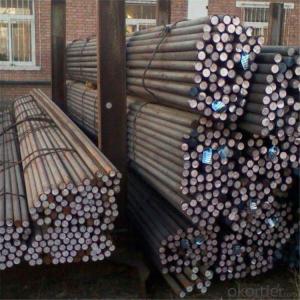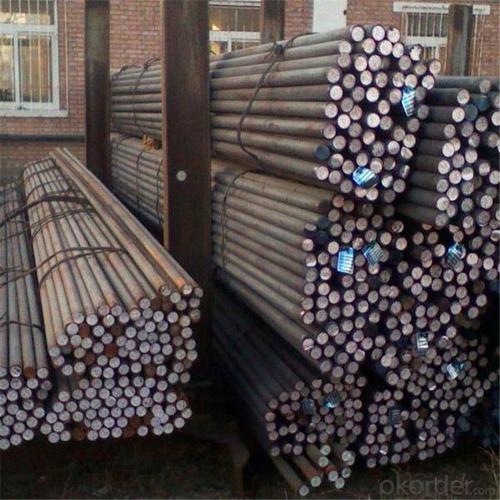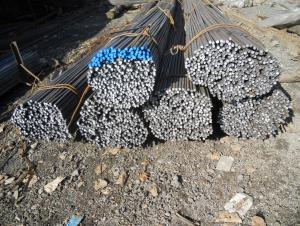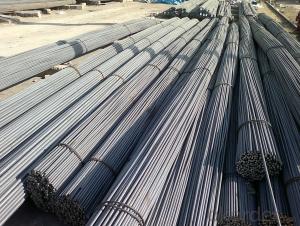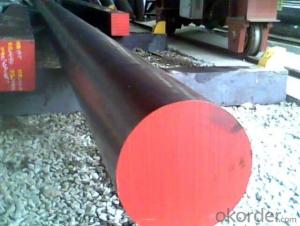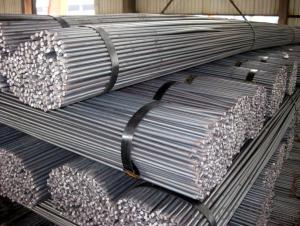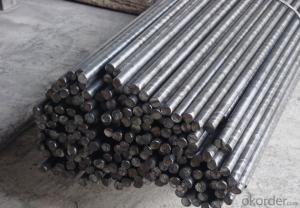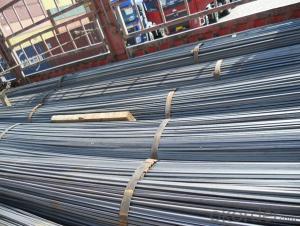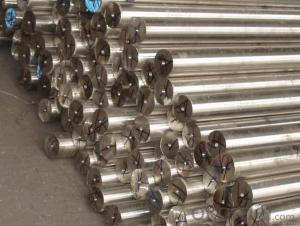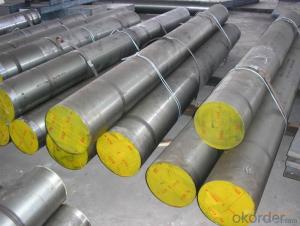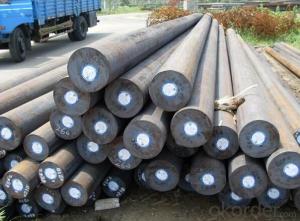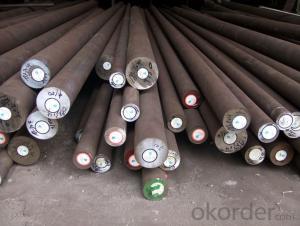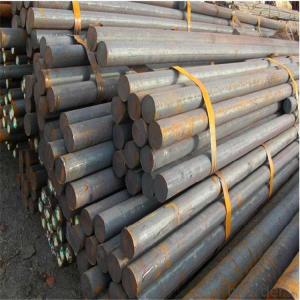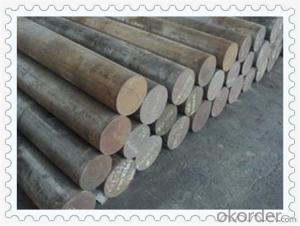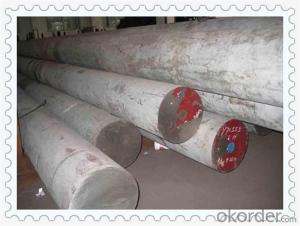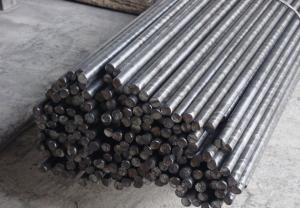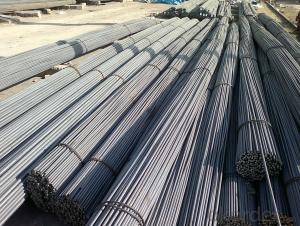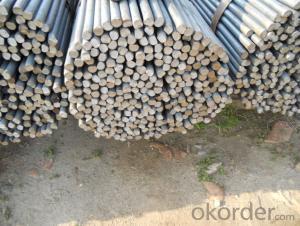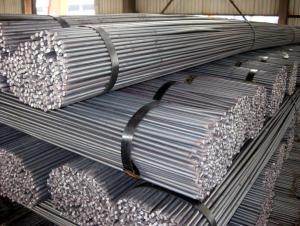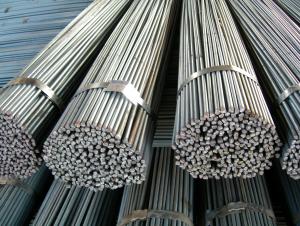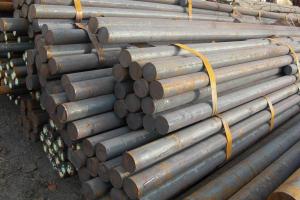Hot Rolled S45C ASTM4140 Alloy Steel Round Bar
- Loading Port:
- Tianjin
- Payment Terms:
- TT OR LC
- Min Order Qty:
- 100 m.t.
- Supply Capability:
- 500000 m.t./month
OKorder Service Pledge
OKorder Financial Service
You Might Also Like
Specification
Hot Rolled S45C ASTM4140 Alloy Steel Round Bar
Product Description of Hot Rolled S45C ASTM4140 Alloy Steel Round Bar
1. Steel grade: SAE1045, 45#, C45, S45C
2. Length: 6M-12M
3. Diameter: 16mm-300mm
4. Product range: round bar, flat bar, square bar
5. Technique: Hot rolled, forged, cold drawn
Specification of Hot Rolled S45C ASTM4140 Alloy Steel Round Bar
Material | S45C ASTM4140 | 16-300mm | ||
Process | EAF + LF + VD + Forged + Heat Treatment (optional) | Length (mm) | Max 12m | |
Heat treatment | Normalized / Annealed / Quenched / tempered | Flat bar | Thickness(mm) | 8-500mm |
Delivery condition | Hot forged +Rough machined (black surface after Q/T)+ Turned (optional) | Width(mm) | 70-200mm | |
Test | Ultrasonic test according to SEP 1921-84 D/d | Length (mm) | Max 12m |
Chemical Composition of Hot Rolled S45C ASTM4140 Alloy Steel Round Bar
C | Si | Mn | Cr | Ni | Cu |
0.40~0.49 | 0.17~0.37 | 0.35~0.65 | ≤0.25 | ≤0.30 | ≤0.25 |
Photo Show of Hot Rolled S45C ASTM4140 Alloy Steel Round Bar
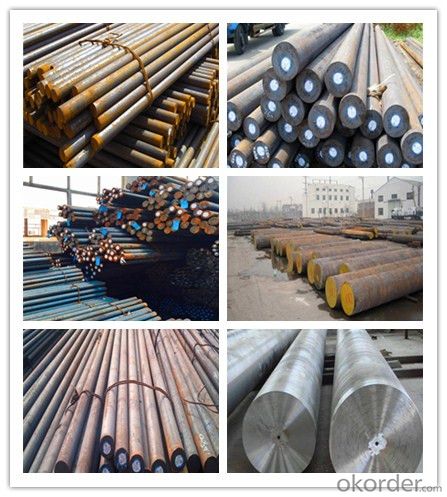
Packing and Delivery:
Packing in bundle package, or as customer's requirements.
Delivery Detail: 45 days after receiving the deposit.
Usage and Applications of Hot Rolled S45C ASTM4140 Alloy Steel Round Bar
1. Steel round bar is used in a large number of architectural and engineering structures. Or it can be used in construction of plants for the production of steel house frames, high-voltage transmission towers, bridges, vehicles, boilers, containers, ships, etc.
2. And we can use this kind of product on the performance of the mechanical parts if the demand is not very high.
3. Some special material steel round bar can be used for main shaft of steamer, hummer shank, with big section and supper force.
Company Information
CNBM International Corporation is the most important trading platform of CNBM group.
Whith its advantages, CNBM International are mainly concentrate on Cement, Glass, Iron and Steel, Ceramics industries and devotes herself for supplying high qulity series of refractories as well as technical consultancies and logistics solutions.

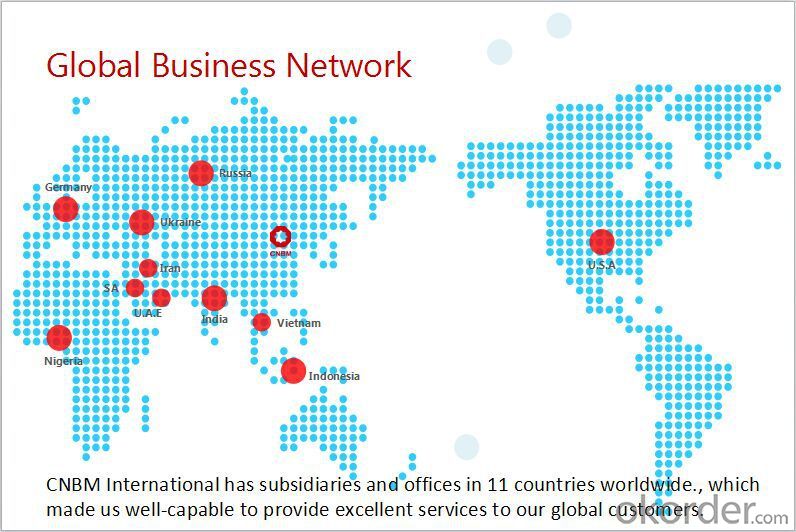
F A Q
1, Your advantages?
professional products inquiry, products knowledge train (for agents), smooth goods delivery, excellent customer solution proposale
2, Test & Certificate?
SGS test is available, customer inspection before shipping is welcome, third party inspection is no problem
3, Factory or Trading Company?
CNBM is a trading company but we have so many protocol factories and CNBM works as a trading department of these factories. Also CNBM is the holding company of many factories.
4, Payment Terms?
30% TT as deposit and 70% before delivery.
Irrevocable L/C at sight.
5, Trading Terms?
EXW, FOB, CIF, FFR, CNF
6, After-sale Service?
CNBM provides the services and support you need for every step of our cooperation. We're the business partner you can trust.
For any problem, please kindly contact us at any your convenient time.
We'll reply you in our first priority within 24 hours.
- Q: How are steel round bars measured and specified?
- The diameter is utilized to measure and specify steel round bars. Typically, the diameter of a round bar is measured in millimeters or inches. The measurement is taken at the widest point of the circular cross-section. When it comes to specification, steel round bars are commonly specified by their diameter and length. For instance, a steel round bar can be specified as "25mm diameter x 3 meters length". This indicates that the bar has a diameter of 25mm and a length of 3 meters. Moreover, steel round bars can also be specified based on their tolerance, surface finish, and grade. Tolerance refers to the allowable deviation from the specified diameter. Surface finish pertains to the quality of the bar's surface, which can vary from rough to smooth. Grade signifies the quality and composition of the steel utilized to produce the round bar, such as mild steel, carbon steel, or alloy steel. Accurate measurement and specification of steel round bars are crucial to ensure that they meet the necessary dimensions and properties for a specific application.
- Q: How do you calculate the length of a steel round bar?
- To calculate the length of a steel round bar, measure the distance from one end to the other using a ruler, tape measure, or any other measuring tool.
- Q: What is the difference between a hot rolled and a turned steel round bar?
- The manufacturing process and resulting characteristics distinguish a hot rolled steel round bar from a turned steel round bar. To produce a hot rolled steel round bar, steel billets or ingots are heated to a high temperature and then rolled into the desired shape. This process facilitates easy forming and shaping, resulting in a bar with a rough surface and a slightly rounded or irregular shape. Hot rolling also enhances the overall strength and toughness of the steel, making it suitable for various applications. In contrast, a turned steel round bar is machined on a lathe from a hot rolled or cold drawn bar. This machining process involves removing material from the bar's surface using cutting tools, resulting in a smooth and precise finish. Turning allows for superior dimensional accuracy and control over the final shape and size of the bar. Regarding surface finish and dimensional accuracy, a turned steel round bar generally provides a higher level of precision compared to a hot rolled bar. The turned bar possesses a smoother surface with fewer imperfections, making it ideal for applications where appearance and aesthetics are important. Furthermore, the turned bar typically adheres to tighter tolerances, ensuring consistent dimensions throughout its length. The choice between a hot rolled and a turned steel round bar depends on the specific requirements of the application. Hot rolled bars are commonly employed in construction, manufacturing, and general engineering applications where strength and toughness play crucial roles. On the other hand, turned bars are frequently utilized in industries such as automotive, aerospace, and precision machining, where a high level of surface finish and dimensional accuracy is necessary. In conclusion, the distinction between a hot rolled and a turned steel round bar can be attributed to the manufacturing process and resulting characteristics. Hot rolled bars offer strength and toughness, while turned bars provide a smoother surface finish and greater dimensional accuracy. The choice ultimately hinges on the specific needs of the application.
- Q: What are the different types of steel round bar alloys?
- There are several different types of steel round bar alloys, including carbon steel, stainless steel, alloy steel, and tool steel.
- Q: Are steel round bars magnetic?
- Yes, steel round bars can be magnetic. The magnetic properties of steel depend on its composition and processing. Most commonly used steel alloys, such as carbon steel or stainless steel, contain iron as the main component. Iron is a ferromagnetic material, which means it can be magnetized. Therefore, steel round bars made from these alloys will exhibit magnetic properties. However, it is important to note that the strength of the magnetism can vary depending on the specific composition of the steel. Some stainless steel alloys, for example, have a lower magnetic permeability and may exhibit weaker magnetic properties compared to carbon steel.
- Q: Can steel round bars be used in the manufacturing of pressure vessels?
- Yes, steel round bars can be used in the manufacturing of pressure vessels. Steel round bars are often used as the raw material for constructing pressure vessels due to their high strength and durability. The round shape of the bars allows for uniform distribution of stress and pressure, making them suitable for withstanding the internal pressure exerted by the vessel's contents. Additionally, steel round bars can be easily fabricated, welded, and machined to meet the specific requirements of pressure vessel construction. However, it is important to ensure that the steel used for the round bars meets the necessary specifications and standards for pressure vessel manufacturing, such as those set by international codes like ASME or EN. Regular inspections, quality control measures, and adherence to relevant safety guidelines should also be followed during the manufacturing process to ensure the integrity and safety of the pressure vessel.
- Q: What are the different types of steel round bars used in the manufacturing of springs?
- There exists a variety of steel round bars that are commonly utilized in the production of springs. These types include: 1. Carbon steel round bars: This particular type of steel is frequently employed for springs and is characterized by its high carbon content, which usually falls within the range of 0.60% to 0.95%. Carbon steel round bars possess commendable strength and durability, rendering them appropriate for a wide array of spring applications. 2. Alloy steel round bars: These are formed by incorporating alloying elements like chromium, manganese, nickel, or vanadium into carbon steel. Alloy steel round bars offer improved mechanical properties, including heightened strength, toughness, and resistance to wear and corrosion. They are commonly employed in demanding or high-performance spring applications. 3. Stainless steel round bars: These bars are resistant to corrosion and contain a significant amount of chromium (usually exceeding 10.5%). Stainless steel round bars are highly sought after for springs that necessitate exceptional resistance to rust, oxidation, and chemicals. They find frequent use in applications where hygiene, cleanliness, and visual appeal are of utmost importance, such as in the food and medical sectors. 4. Spring steel round bars: These bars are specifically designed for spring production. They possess a unique combination of properties, including high yield strength, good fatigue resistance, and excellent elasticity. Spring steel round bars are typically crafted from either carbon steel or alloy steel, depending on the specific requirements of the application. It is crucial to select the appropriate steel round bar based on factors such as the intended application, load requirements, environmental conditions, and desired spring performance. Seeking guidance from a materials engineer or spring manufacturer can aid in determining the most suitable steel round bar for a particular spring manufacturing project.
- Q: Can steel round bars be used for making electrical components?
- Steel round bars can be used for making certain electrical components, but it depends on the specific requirements and applications. Steel is a versatile material with good electrical conductivity and high durability, making it suitable for various electrical applications. However, for certain components that require specific electrical properties or insulation, other materials such as copper or aluminum may be more commonly used. Additionally, steel round bars may need to undergo surface treatments or coatings to prevent corrosion or improve electrical conductivity. Ultimately, the suitability of steel round bars for making electrical components should be assessed based on the specific requirements and regulations of the intended application.
- Q: What's the difference between round steel and screw steel? Which is cheaper than steel on the market these days?
- Round bar is divided into three parts: hot rolling, forging and cold drawing. Standard Specification for hot rolled round steel is 5.5-250 mm. Of which: 5.5-25 mm of small round bars, commonly used as steel, bolts and various mechanical parts, larger than 25 millimeters of round steel, mainly for the manufacture of machinery parts. Round steel has many kinds of materials, such as: Q195, Q235, 10#, 20#, 35#, 45#, Q215, Q235, 304, 316, 20Cr, 40Cr, 20CrMo, 35CrMo, 20CrMnTi, 5CrMnMo, etc...
- Q: How do you calculate the moment of inertia for a steel round bar?
- The moment of inertia for a steel round bar can be calculated using the formula for the moment of inertia of a solid cylinder, which is given by I = (1/4)πr^4, where I is the moment of inertia and r is the radius of the round bar.
Send your message to us
Hot Rolled S45C ASTM4140 Alloy Steel Round Bar
- Loading Port:
- Tianjin
- Payment Terms:
- TT OR LC
- Min Order Qty:
- 100 m.t.
- Supply Capability:
- 500000 m.t./month
OKorder Service Pledge
OKorder Financial Service
Similar products
Hot products
Hot Searches
Related keywords
